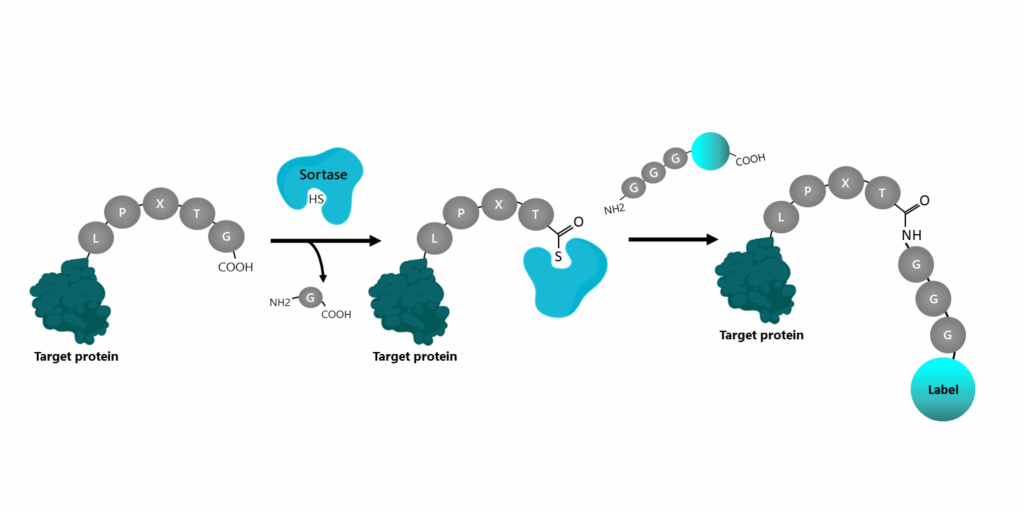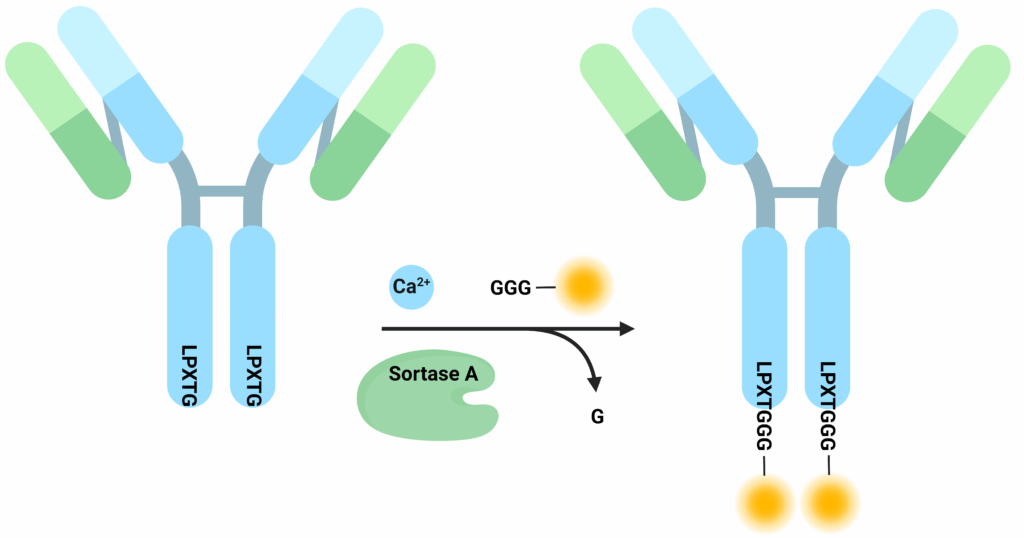LIVE-Step™ Cell Assay System: Simplicity and Accuracy
The LIVE-Step™ Cell Assay System from BPS Bioscience is designed for high-throughput, homogeneous, sensitive luminescence quantification of metabolically active, viable mammalian cells.
Sortase conjugation enables precise protein and biologic engineering, enhancing therapeutic performance and overcoming traditional method limits. BPS Bioscience offers kits and services to support your protein labeling.
Sortase-mediated conjugation is a powerful technique for the precise engineering of enzymatic tools or therapeutic biologics. It enables site-specific attachment of antibodies and proteins to various molecules and materials, including fluorescent labels for imaging and sorting, pharmaceutical compounds, nanoparticles, and even cells for drug delivery. This enzymatic approach overcomes the limitations of conventional chemical conjugation methods, which can be random and compromise antibody function.
Applications of Sortase-mediated engineering include Fc-oriented antibody labeling to preserve antigen recognition, PEGylation to extend protein half-life while maintaining biological activity, generation of circular polypeptide for increased thermal stability, and enzyme immobilization for industrial applications.
A major use of Sortase-mediated conjugation is in the field of antibody-drug conjugates (ADCs), where it ensures site-specific payload attachment, avoiding the heterogeneity seen in traditional methods. Indeed, by introducing a Sortase recognition sequence at a defined site on the antibody, researchers achieve consistent drug-to-antibody ratios, improving reproducibility and therapeutic efficacy. The reaction occurs under mild conditions, preserving the antibody’s structure and function.
Sortase A, a well-characterized bacterial transpeptidase from Staphylococcus aureus, naturally attaches proteins to bacterial cell walls, performing a critical function in bacterial virulence. It specifically recognizes the LPXTG sequence, cleaving between threonine (T) and glycine (G). The enzyme contains a cysteine residue in its active site, which forms a thioacyl intermediate that can immediately react with an oligo-glycine nucleophile, covalently linking the protein substrate to the oligo-glycine.
Biotechnology harnesses this specificity to precisely label or modify virtually any protein of interest in solution or on cell surfaces, enabling applications in biologic engineering, therapeutics, and diagnostics.

To label a protein of interest:
Engineered Sortase variants now overcome previous limitations in activity and stability, broadening their use in therapeutics, biorthogonal chemistry, biomaterials, and biosensors. This versatile methodology offers a robust and reproducible approach that enables both targeted delivery systems and enhanced protein properties. BPS Bioscience provides multiple options for Sortase-based protein and antibody conjugation.

The Antibody Labeling Kit (BPS Bioscience #82155) achieves homogeneous labeling of antibodies containing sequence LPXTG at the C-terminus of the heavy chain. Poly-glycine-containing molecules (fluorophores, biotin, peptides) are compatible with this kit. The site-specific conjugation ensures that the antigen-binding site remains available. The kit is ideal for ADCs or flow cytometry antibodies.

The Protein Labeling Kit (BPS Bioscience #79392) achieves direct conjugation of any LPXTG-containing protein with an efficiency greater than 90%. This kit relies on the highly active Sortase 5Δ Pentamutant for high yield and contains purification columns, and Ubiquitin-LPETGH6 and GGG-Clover as positive controls.
The Sampling kit provides wildtype Sortase A and four different mutants to evaluate which is best for a chosen application.
We gladly support you by keeping you updated on our latest products and the developments around our services.